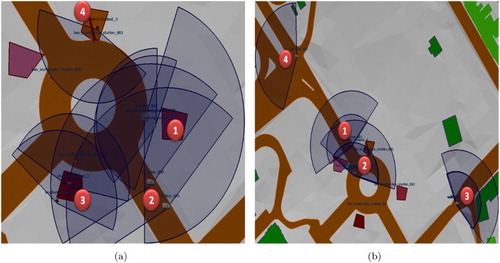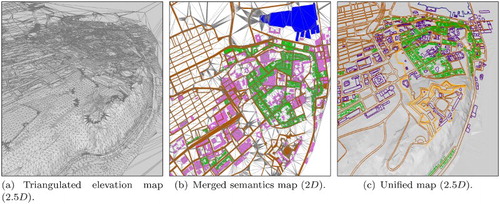Figures & data
Figure 1. Cells resulting from curved geometries (a) and alignment anomalies (b) (Paris, Donikian, and Bonvalet Citation2006).

Figure 2. An agent representing a human operating a smart object – a drawer (Kallmann Citation2001).
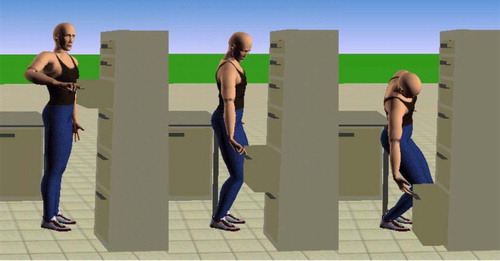
Figure 3. Various semantic layers related to Quebec City (Canada): (a) road network, (b) old city wall, (c) marina, (d) governmental buildings, and (e) houses.

Figure 5. The IVGE global architecture of IVGE generation including the environment abstraction process.
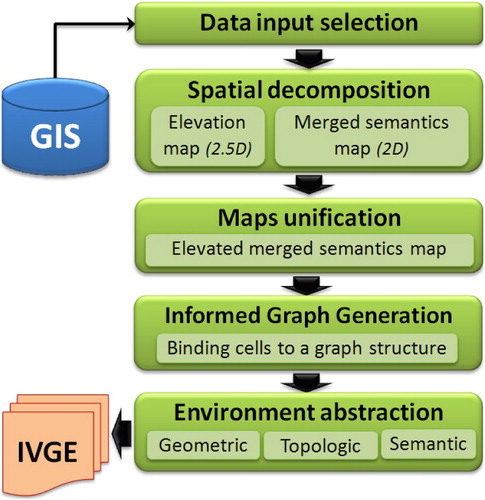
Figure 6. Profile section of anomalous Isolated Groups adjusted to the average elevation of the surrounding ones.

Figure 7. The topological graph extraction from space decomposition and extension into different levels using the topological abstraction.
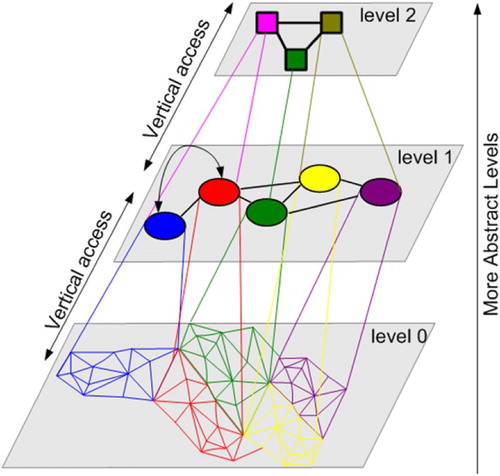
Figure 8. Illustration of the topological abstraction process with a strict convex property (): (a) the GIS data of a complex building, (b) the exact space decomposition using CDT techniques (63 triangular cells), and (c) the topological abstraction (28 convex polygons).
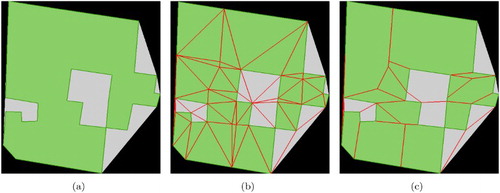
Figure 10. An example of a conceptual description of agents archetypes (a), actions performed (b), and locations situated in a geographic environment (c).

Figure 11. The IVGE representing a part of Quebec city where the spatial behaviour simulation takes place with five geo-referenced locations.
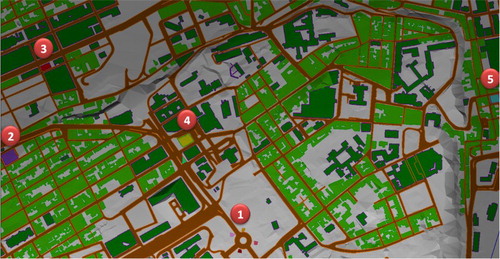
Figure 12. Stations, student and worker passengers, and buses: (a) 3 students and 2 workers agents; (b) 4 agents of type Bus approaching the stations. Agents either students, workers, or buses are associated with their respective perception fields.

Figure 13. Simulation of human agents (students and workers) getting on the bus and moving towards their final destinations.
